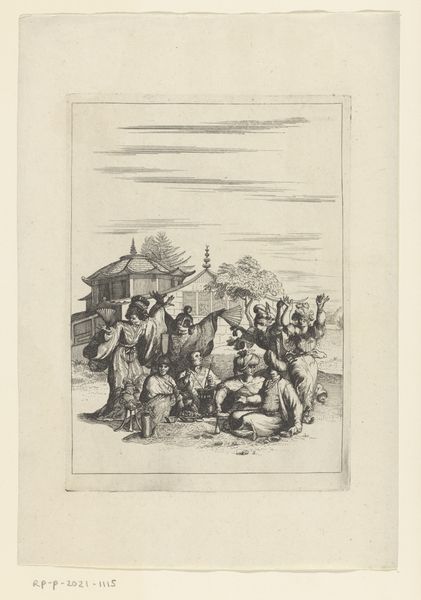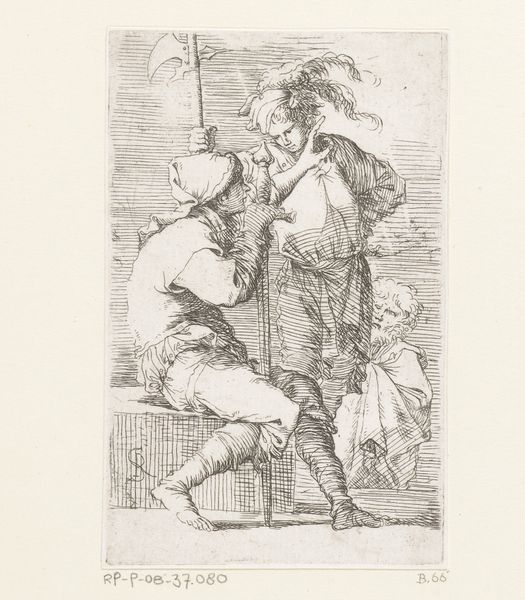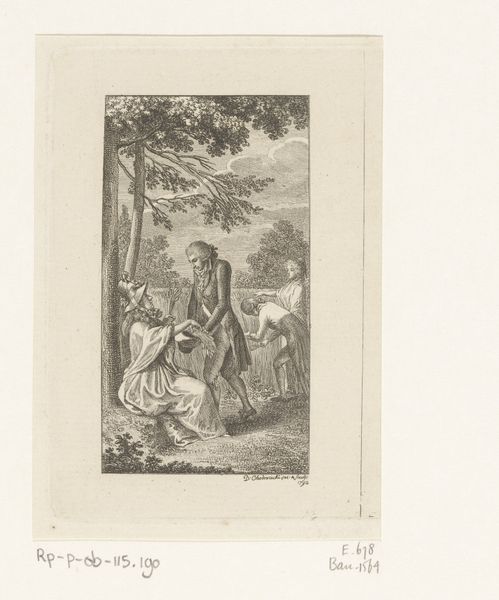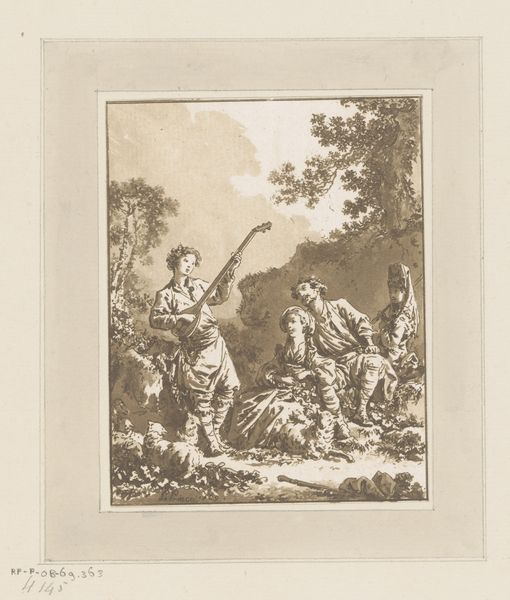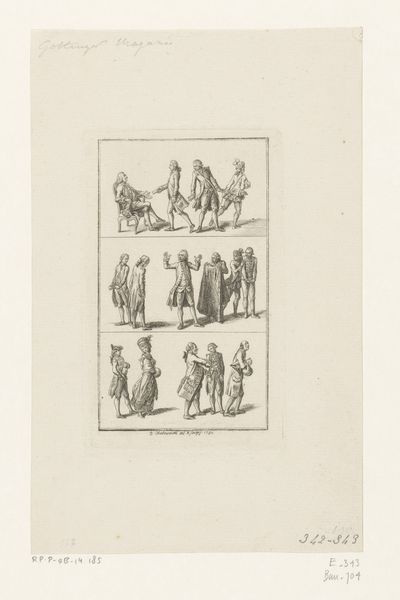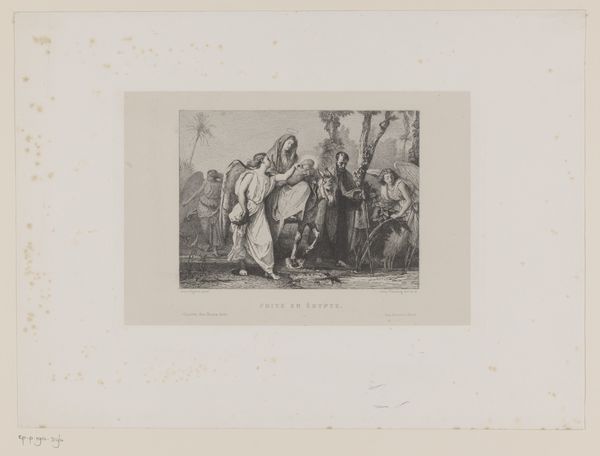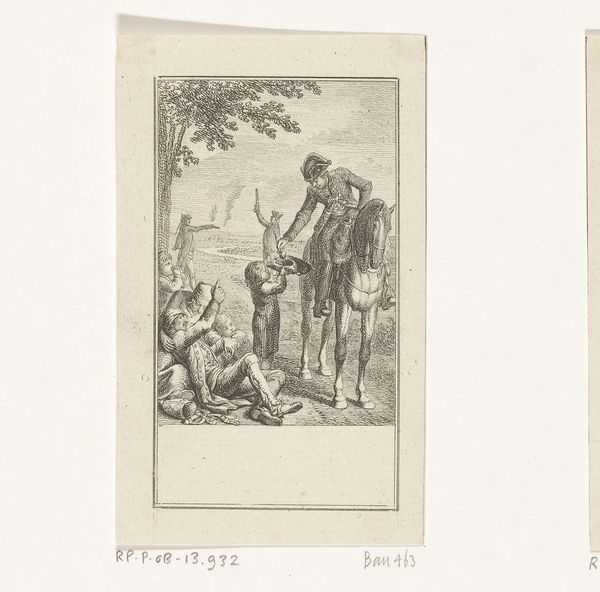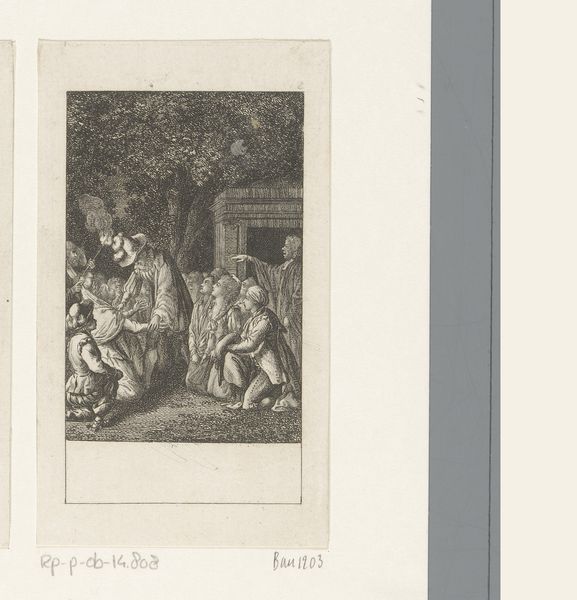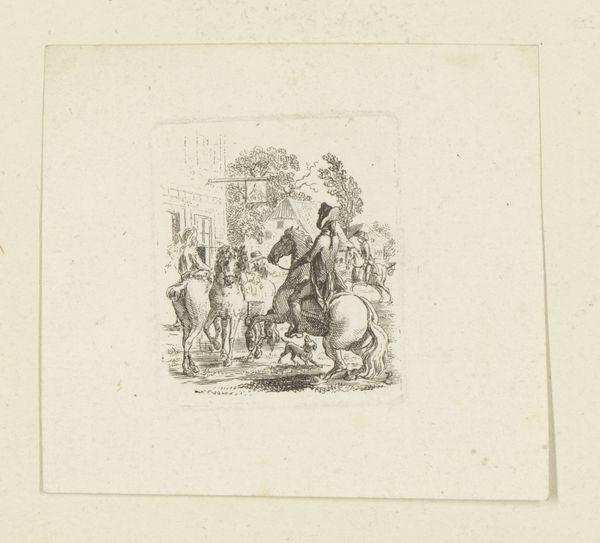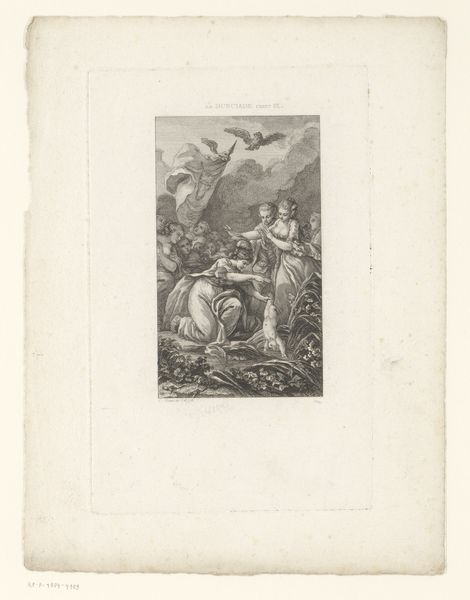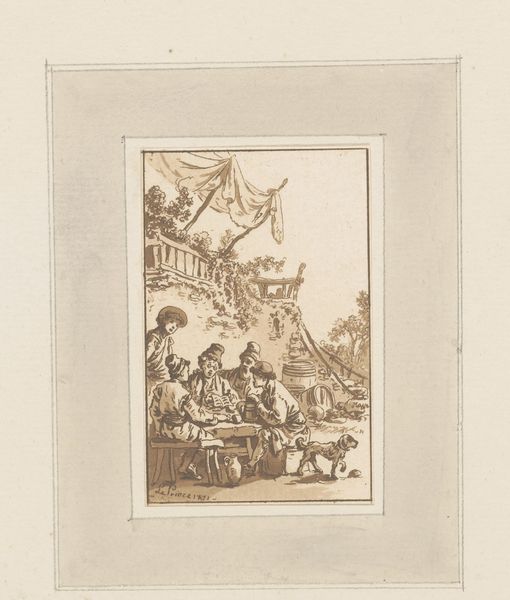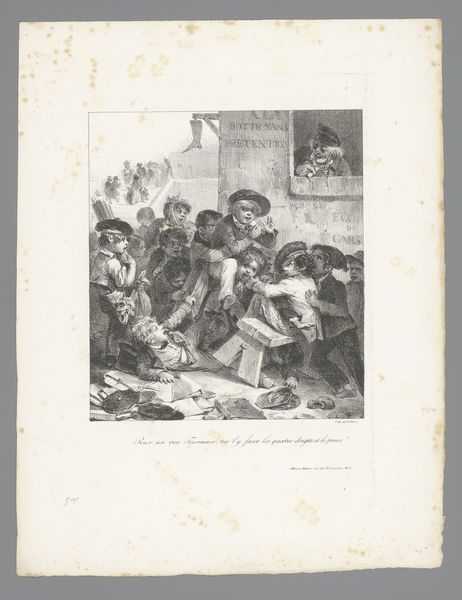
drawing, print, etching, engraving
#
drawing
#
narrative-art
# print
#
etching
#
caricature
#
romanticism
#
genre-painting
#
history-painting
#
engraving
Dimensions: height 144 mm, width 88 mm
Copyright: Rijks Museum: Open Domain
Curator: Immediately, the graphic division into two registers creates a comparative visual dynamic. Editor: Indeed, let's examine "Theaterfiguren", or "Theater Figures", a drawing by Johann Wilhelm Meil the Younger, crafted in 1794 using etching and engraving techniques. It presents us with two distinct scenarios, both teeming with a distinct theatrical quality. Curator: Absolutely, there's an implicit staging here. The upper register displays figures of supposed authority, arranged like actors before an audience. The figures appear like dwarves dressed as guards, but carrying over sized equipment; each is frozen in a parodic version of watchfulness. Editor: Note the deliberate use of caricature here—the exaggerated proportions and gestures—almost like illustrations from a grotesque fairytale, or maybe street players. The composition suggests a specific narrative that remains partially obscured. I’m curious about the symbolic meaning vested in their presentation. What does this signify about 18th century perceptions of leadership or governance? Curator: Good question. It appears these figures are not figures of importance at all, rather representations of them, maybe actors, or figurines on a miniature set for all we know! Perhaps these caricatures are playing on the tension of historical conflict between the bourgeoisie and aristocratic order. It resonates with an older kind of grotesque representation common from medieval performances. Editor: And consider the lower register; more drama unfolds with figures clustered around someone lying down as if dead or in swoon. This almost reads like a lamentation scene from a history painting, but again, strangely reduced in scale and distorted through Meil's technique of caricature. Curator: And who is in the background of the swooning or dying woman? A kind of angel of death character? And yet again we arrive at a sense of the performance, where one person is really hurt, while another looks on in grief, which is more akin to that of playing it up for someone. Is this even authentic? Editor: Authentic only in its artifice. By employing caricature in both scenarios, Meil is drawing attention to the artifice of spectacle and, perhaps, questioning the roles individuals are compelled to play within societal narratives. I wonder about this juxtaposition. Does it undermine one representation to question another? The connection of authority and its legitimacy and performance. Curator: It does provide a means for critical reflection by amplifying societal archetypes and the codes in which those were operating within that time. Both visually jarring scenes highlight the performed roles that solidify and, consequently, constrain social life in a theater that often looks very serious.
Comments
No comments
Be the first to comment and join the conversation on the ultimate creative platform.
